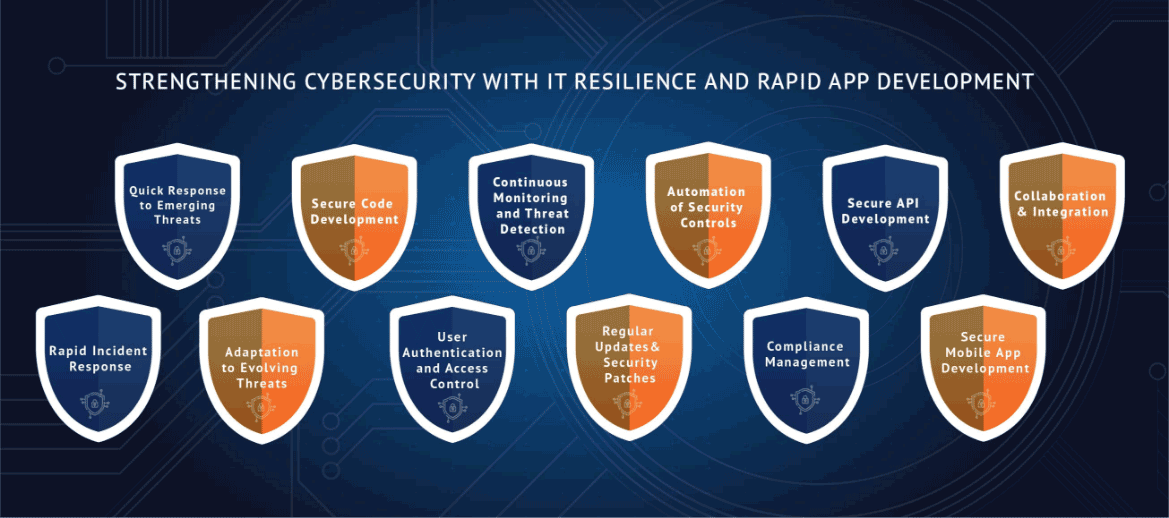Table of Contents
In the digital age, where organizations rely heavily on technology to conduct their operations, the threat landscape for cyberattacks has grown more complex and sophisticated. As a result, having the best IT infrastructure is no longer a luxury but a necessity to counter cyber threats effectively.

- 1. Quick Response to Emerging Threats: Rapid application development allows organizations to develop and deploy security patches and updates swiftly. When new vulnerabilities are discovered, this agility is crucial in minimizing the window of opportunity for cybercriminals.
- 2. Secure Code Development: Rapid application development methodologies incorporate security best practices into the development process. This includes code reviews, vulnerability scanning, and testing for security flaws, resulting in more secure applications.
- 3. Continuous Monitoring and Threat Detection: Applications developed using rapid development methodologies can include continuous monitoring and threat detection capabilities. These applications can identify and respond to suspicious activity in real-time, mitigating threats before they escalate.
- 4. Automation of Security Controls: Rapid application development often involves the automation of security controls. This can include automated security testing, code analysis, and the enforcement of security policies, reducing the risk of vulnerabilities.
- 5. Secure API Development: As organizations increasingly rely on APIs for data exchange, rapid application development can ensure that APIs are developed securely, reducing the attack surface and preventing data breaches.
- 6. Collaboration and Integration: Rapid application development fosters collaboration between developers, security experts, and other stakeholders. This interdisciplinary approach ensures that security is an integral part of the development process.

- 7. Rapid Incident Response: In the unfortunate event of a cyber incident, applications developed using rapid methodologies can facilitate rapid incident response. They can provide the necessary data and tools for security teams to investigate and mitigate threats promptly.
- 8. Adaptation to Evolving Threats: Rapid development allows organizations to quickly adapt their applications to address evolving cyber threats. This agility is essential in maintaining effective security measures.
- 9. User Authentication and Access Control: Rapid application development enables the swift implementation of robust user authentication and access control features, reducing the risk of unauthorized access and data breaches.
- 10. Regular Updates and Security Patches: Rapid development allows organizations to release updates and security patches more frequently. This ensures that applications remain secure and up-to-date, reducing the risk of exploitation.
- 11. Compliance Management: Rapid application development methodologies can include compliance management features, helping organizations adhere to industry-specific cybersecurity regulations.
- 12. Secure Mobile App Development: With the proliferation of mobile devices, rapid application development ensures that mobile applications are developed with security in mind, protecting sensitive data on mobile platforms.
Conclusion
In summary, rapid application development is a vital component in the ongoing battle against cyber threats. Its ability to facilitate quick responses to emerging dangers, develop secure code, and maintain continuous monitoring is crucial. Automation, collaboration, and adaptation to evolving threats further strengthen cybersecurity measures. By integrating rapid development with robust IT infrastructure, organizations can effectively mitigate risks, safeguard data, and ensure a secure digital environment.




